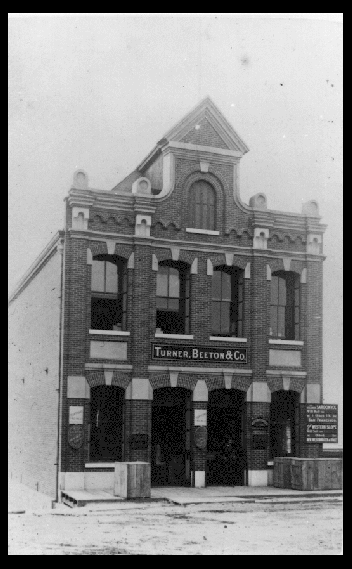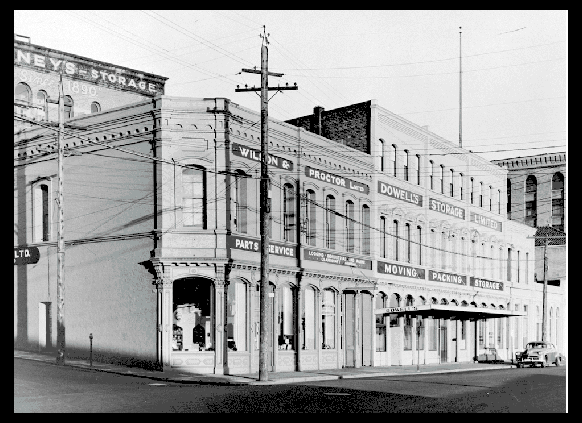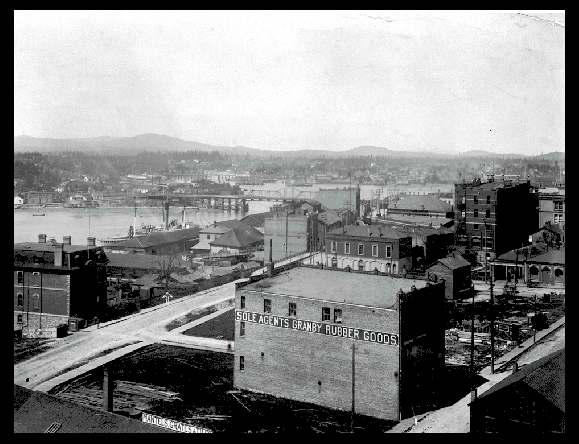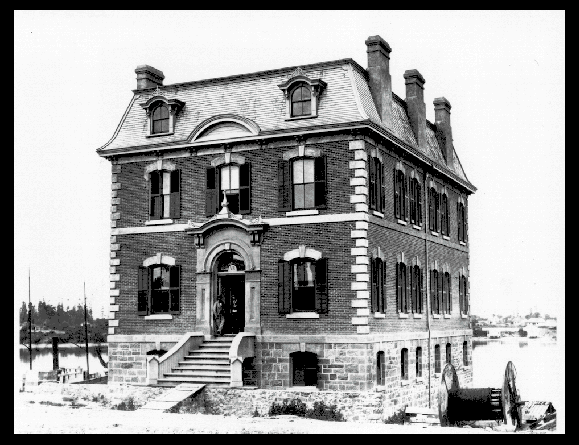Historical Background of Victoria
General Progress on Wharf Street
List of Wharf Street Businesses
Building Profiles and Architecture
The Hudson’s Bay Company (HBC) constructed the first permanent buildings in Victoria as early as 1843. During these early years Fort Victoria and other HBC company buildings dominated the landscape of what is now downtown Victoria. Many of Victoria's city blocks, including Fort, Bastion, Yates and Wharf Street grew up around the permineter of the fort. However, with the discovery of gold on the mainland in 1858 and the flood of Americans that came north to Vancouver Island, other entrepreneurs rapidly built wholesale and trades businesses, hotels, and saloons to meet the demand created by the thousands of miners passing through. Moreover, the dismantling of Fort Victoria in the early 1860s denoted the end of the Hudson's Bay Company’s control over trade and supply.
During the gold rush years from 1858 to 1865, Wharf Street developed as a commercial district and over time extended from the Customs House at the foot of Broughton Street to the Occidental Hotel at the corner of Wharf and Johnson Street. The various businesses along the oceanfront included grocery and dry goods warehouses, fur stores, ship chandlers, saloons, blacksmiths, tradesmen, as well as the Hudson’s Bay store and warehouses. As a result of the large influx of Americans, the architectural style of the structures constructed during this period had a distinctly American flavour. Aside from the Hudson’s Bay warehouse, Wharf Street was similar in style to a classic west Coast American town with its long strips of two to three storey structures with exposed store frontage.36 English architect John Teague followed the wave of miners from California to Victoria where he settled and launched an architectural firm. Teague greatly influenced the character of commercial architecture in Victoria with his style of basic brick buildings with Italianate ornament, a design prevalent in San Francisco at this time.37
The Wharf Street Heritage Designation Report noted, “in an age lacking sophisticated propagandizing media such as our own, architectural statements did not go unnoticed.”38 As Victoria continued to prosper decorative iron detailing, characteristic of thriving centres like San Francisco and Portland, was added to the front of many buildings. Business owners sought to present an impression of prosperity to their customers and creditors. The presence of brick and stone buildings on Wharf Street was a sign of considerable investment and permanence, and signified confidence in future development and prosperity of the commercial district and city.39
The following links are profiles of some of the many buildings present on Wharf Street during the early 1880s, some of which still exist today.
ingles paso texas
Turner, Beeton & Co. Warehouse - 1883
Wilson & Proctor Building and Rithet Building - 1950s
Victoria Harbour Showing Johnson and Wharf Street - 1880 (note the prominence and grandure of the Customs House on the left of photo)
Customs House - 1870s



